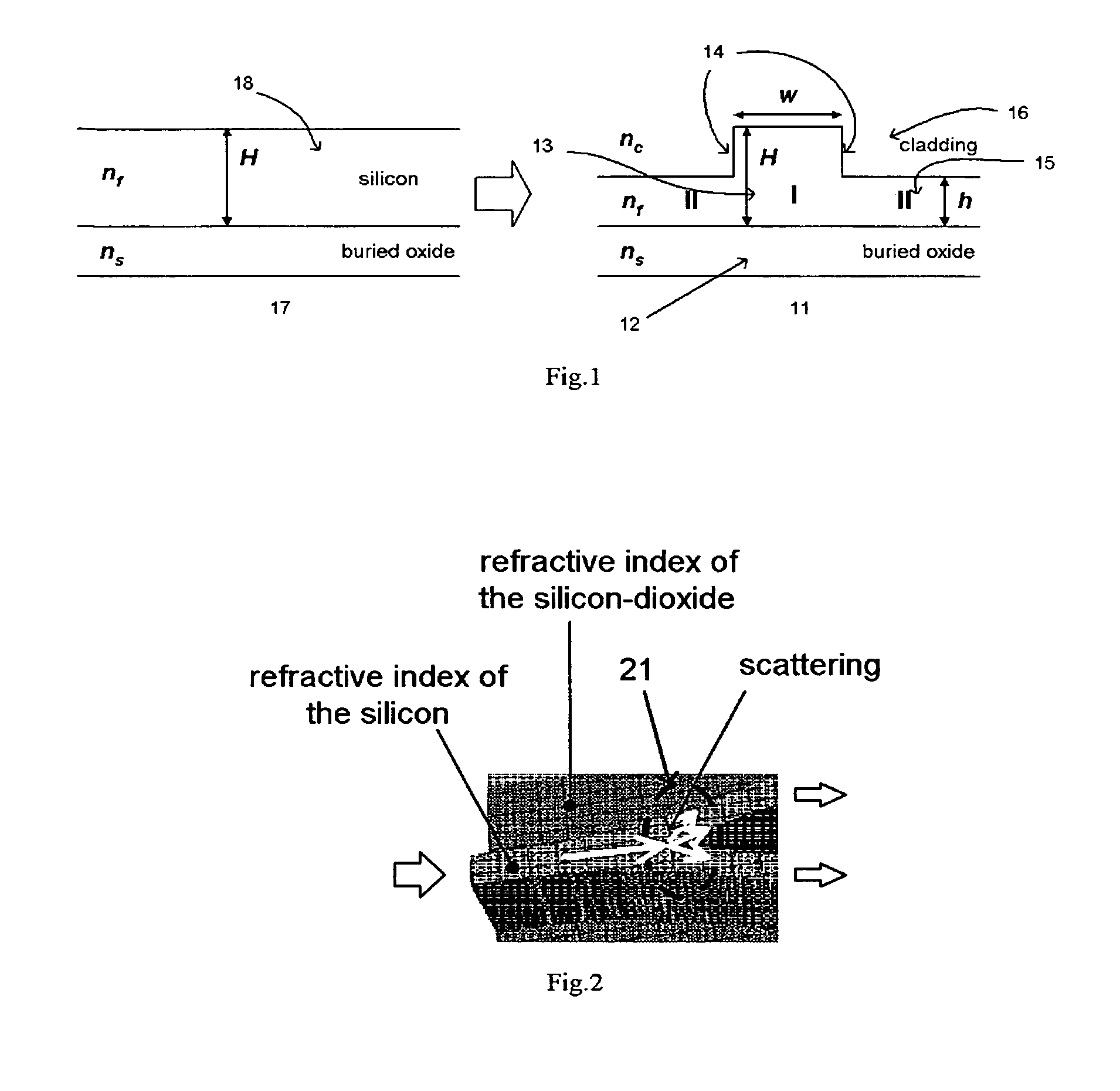Single mode photonic circuit architecture and a new optical splitter design based on parallel waveguide mode conversion
a photonic circuit and waveguide mode technology, applied in the direction of optical waveguide light guide, instruments, optical elements, etc., can solve the problems of single mode operation condition of waveguide, inability to use devices in the system, and significant mode dispersion and random coupling among signals, etc., to achieve high density of photonic circuits, small bend radius, and high lateral index contrast
- Summary
- Abstract
- Description
- Claims
- Application Information
AI Technical Summary
Benefits of technology
Problems solved by technology
Method used
Image
Examples
Embodiment Construction
[0034]Single Mode Photonic Circuits (SMC) Architecture
[0035]The first invented structure, or architecture, or a design approach, is the single mode photonic circuits (SMC) in which the multimode waveguide can be used. As we mentioned before, the whole PIC must be maintained as single mode operation, but it doesnhave to be achieved by the single mode waveguide. The idea is a new concept: single mode at system (circuit) level. As long as the whole circuit can only operate at one mode, the individual section can be constructed by multimode waveguides. A mode filter will be inserted after the multimode section. If designed correctly, the high order modes will not be excited in those multimode sections, and even they are, the mode filter will remove those high order components and keep the whole system at the single mode. In the ideal case, the high order mode excitation will never occur after the mode filter of the fiber-to-PIC coupling interface since only the main guiding mode is exci...
PUM
 Login to View More
Login to View More Abstract
Description
Claims
Application Information
 Login to View More
Login to View More - R&D
- Intellectual Property
- Life Sciences
- Materials
- Tech Scout
- Unparalleled Data Quality
- Higher Quality Content
- 60% Fewer Hallucinations
Browse by: Latest US Patents, China's latest patents, Technical Efficacy Thesaurus, Application Domain, Technology Topic, Popular Technical Reports.
© 2025 PatSnap. All rights reserved.Legal|Privacy policy|Modern Slavery Act Transparency Statement|Sitemap|About US| Contact US: help@patsnap.com



